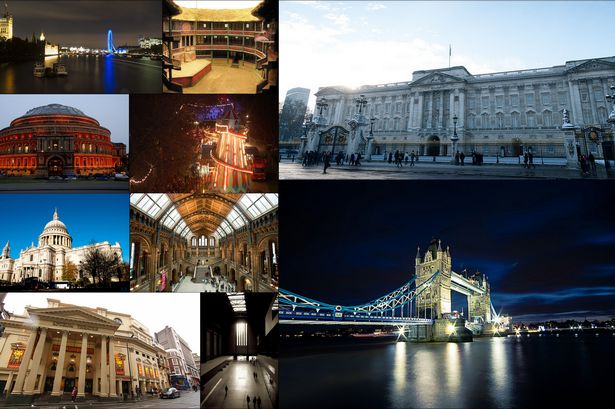Vacation attractions and taxi firms in London 2024: London is a large metropolitan area, more than 30 miles across, so your meeting or hotel location will likely impact where you choose to land. London Stansted (EGSS) is a 24/7 airport of entry (AOE) with plenty of GA parking and complete support services with multiple transportation options into London. Airport slots are required, and there are restrictions to consider for noisier aircraft. For example, a Global Express may depart 24/7, while a private Gulfstream 2 may not be able to operate after 2330 local due to noise considerations. Aircraft hush kitted to Stage 3 standards are permitted, based on submitted noise certificates. Still, while they may be able to arrive 24/7, departures may be restricted after 2330 local. Discover even more information at Taxi Luton to Heathrow.
A cathedral to culture, the V&A is a world-class museum championing the very best of decorative art and design. High-profile ticketed exhibitions often sell out, but the permanent exhibits are fascinating, free to visit (book a ticket and time slot through a new and socially distanced system) and include a mini pet cemetery. The world’s first all-porcelain courtyard created by architect Amanda Levete with 11,000 handmade tiles. When it catches the sunlight, the glittering ceramics make London look like 1960s Rome.
Prison, palace, treasure vault, observatory, and menagerie: the Tower of London has done it all and it’s one of the top attractions in London. Widely considered the most important building in England, there’s enough to see and do at this World Heritage Site to keep visitors busy for hours. The centerpiece of this Thames-side fortress is the White Tower. Built in 1078 by William the Conqueror, it’s home to amazing exhibits, such as Line of Kings, the world’s oldest visitor attraction, established in 1652 with a remarkable display of royal armor. Other highlights include the impressive Crown Jewels exhibition, classic Yeoman Warder Tours, the Royal Mint, and exhibits and displays regarding prisoners and executions. All told, the Tower of London covers some 18 acres, so there’s a great deal of exploring to do.
Hailed as the anti-theme-park, Bewilderwood offers an unplugged experience full of fantasy and adventure. Explore treehouses, zip-wires, rickety bridges and meet some of the mystical creatures who inhabit the woods. Parents are encouraged to find their inner child and get stuck into the adventure too! Located just a 30 minute drive from Glasgow, Loch Lomond Centre offers visitors the chance to see some rare birds of prey in an up-close and personal setting. There are 35 species of birds and plenty of opportunities to meet them and enjoy a hands-on educational experience.
Rise high above London and see the city’s iconic skyline from a unique perspective, with views stretching up to 40 miles (64km). Spot the likes of the London Eye, St Paul’s Cathedral and Wembley Stadium from The View from The Shard’s observation deck, which sits 800ft (244m) up western Europe’s tallest building. Get a taste of the deep blue sea at SEA LIFE London. Spot up to 400 species including sharks, stingrays, moray eels and clown fish at the aquarium. See stunning green sea turtles and test your nerve on the glass “shark walk”. Learn more at daily talks and feeding times. See more details on https://skybridgecars.com/.
If you’re stopping over in Heathrow overnight in between your connecting flight, you’re probably going to want to get some shut-eye. You’ll find you’re in good company if you want to take a nap in the seating areas. However, if you’re after greater comfort check out the YOTELAIR hotel (terminal 4). There are pod-like cabins with comfortable memory foam mattresses with private bathroom facilities to enjoy. If you only want a few hours of sleep, this is a great option to freshen up after a nap. Heathrow is much more than an airport. You can shop until you drop. You’ll find all the big brands at part of the shopping experience. But, don’t concentrate on shopping while you’re there, and forget you’ve got a flight to catch.
From watching the changing of the guard to catching a glimpse of the royals on the balcony at state occasions, the Queen’s HQ is usually a top tourist spot. But its status as the official royal residence is relatively recent. Originally built as a townhouse for the Duke of Buckingham in the 18th century, it was first acquired by royalty in 1761 when George III bought it for his wife Queen Charlotte. The architect John Nash transformed it into a grand palace, but George died before he could move in and Queen Victoria became the first monarch to live in it. Carved into the chalky hillside above the village of Cerne Abbas in Dorset, this ancient outline of a naked giant has attracted curious travellers for centuries. No one quite knows when or why the 180-foot (55m) tall figure was carved here, although folklore has it that it was an ancient symbol of fertility. Nevertheless, Britain’s largest chalk hill figure is a spectacular sight.
